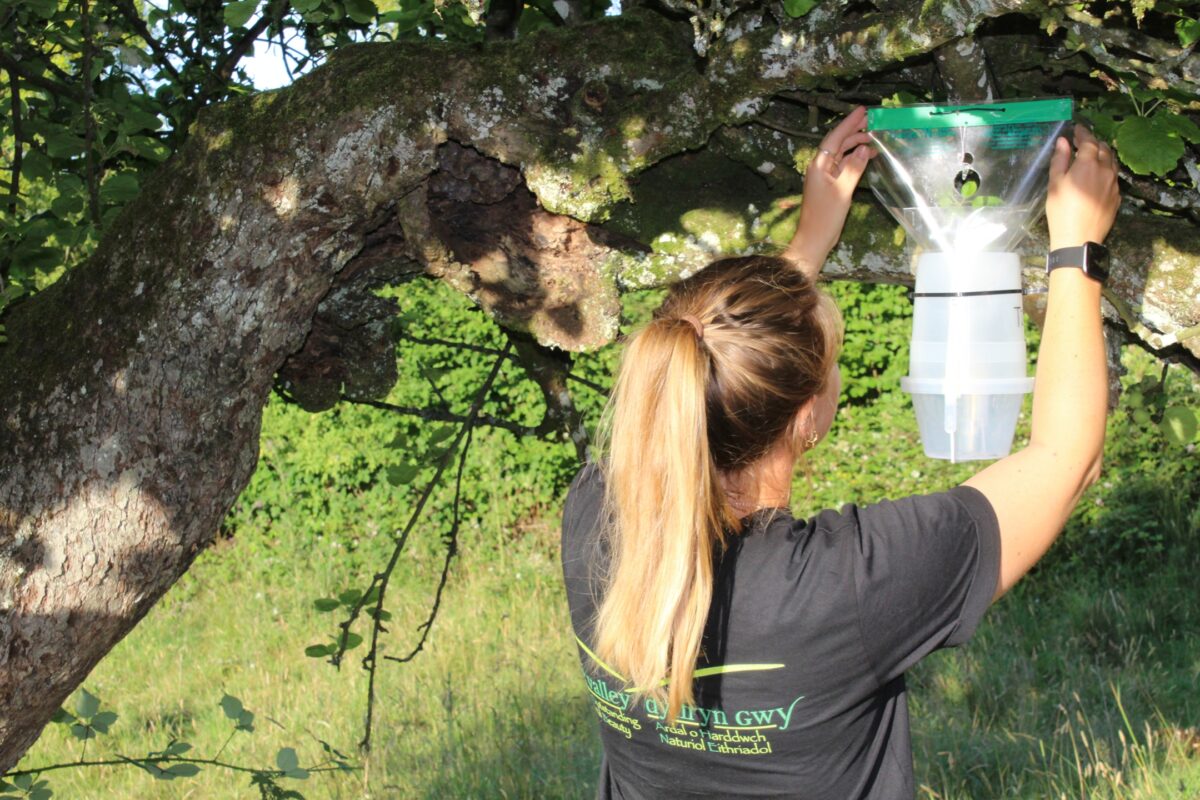
The Noble chafer is a gorgeous metallic-green beetle found in traditional orchards and wood pastures.
Why does it need protecting?
It is classed as Nationally Scarce in Great Britain, is ‘Vulnerable’ and a Priority Species in the UK Biodiversity Action Plan. The main national distribution today is in the old orchard counties of Gloucestershire, Worcestershire and Herefordshire.
What habitats does it need?
Veteran fruit trees and decaying wood provide vital habitat and a safe place for larvae to live, as they take up to three years to develop into adult beetles. Traditional orchards are a feature of the AONB landscape, but their numbers reduced dramatically during the 20th century. The Wye Valley AONB still has 1% of England’s orchards while 6% of orchards in Wales are found in the Welsh part of the AONB.
Why we chose it?
People are drawn to the metallic, jewel-like colours of this beetle, making it a great conversation opener to talk about orchard management and habitats, the creation of new orchards and the importance of veteran, decaying and dead trees.
During the summer of 2022 the AONB Unit took part in a national survey to monitor for the Noble chafer beetle, to provide us with baseline population data. We carried out a pheromone lure trapping survey to determine their current range within the AONB. Over 6 summer weeks beetle traps (harmless!) were hung in orchard trees, fitted with pheromone lures designed to attract Noble chafers. Ellie Baggett, our Nature Recovery Officer, ran the beetle trap 38 times at 27 different locations across the 3 counties (and 2 countries!) of the AONB. Unfortunately, no Noble chafers were found in the Gloucestershire or Monmouthshire parts of the AONB, but we struck gold in Herefordshire with two Noble chafer sightings in one weekend!
Another Herefordshire landowner found Noble chafer larvae inside one of his trees. One of these orchards had a past record of Noble chafers, with ours being the first sighting of an adult beetle in 18 years, whilst the other two orchards are brand new records for Herefordshire – a fantastic end to the survey!
We can now identify potential wildlife corridors between Noble chafer sites, where we can work to create the right habitat – by expanding, joining up or creating new orchards. The beetle’s preferred orchard species is the plum tree and we have been planting new plum and damson trees at the orchard where we discovered the beetles last summer – Plantlife’s Joan’s Hill Reserve at Checkley.
Fruit trees can live for a 100 years and in the last decades of their lives they provide decaying wood habitat, which the beetles need. So it’s important we plant replacement trees and manage older trees to prolong their lives, ensuring a variation in age and the continued presence of wood-decay habitats.
Read about work at Joan’s Hill Farm here.
Although plums and damsons are some of the fastest species to produce decaying wood, it may be 60 years before they become suitable for beetle colonisation. In the meantime, we are putting up some artificial ‘beetle boxes’, filled with wood compost, to increase the available habitat, and to act as stepping stones between the two orchard areas at Joan’s Hill Farm. These boxes have been made especially for the beetles by local carpenter Jed Warman. It can take three years before the conditions in the boxes are to the liking of noble chafers, so this is a long term housing policy!